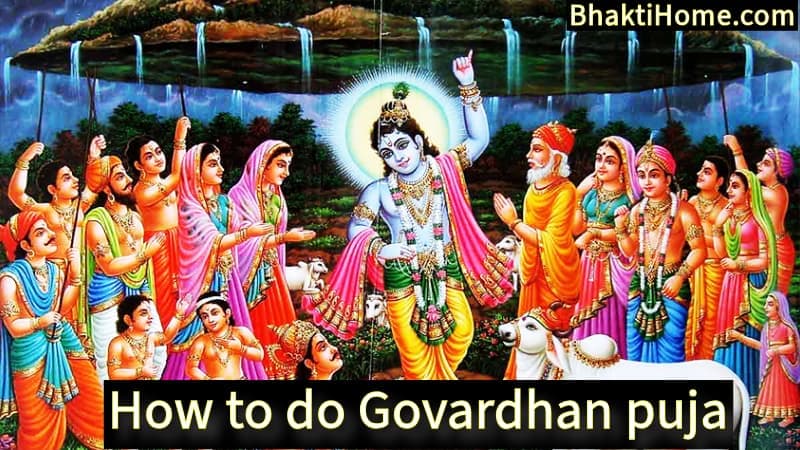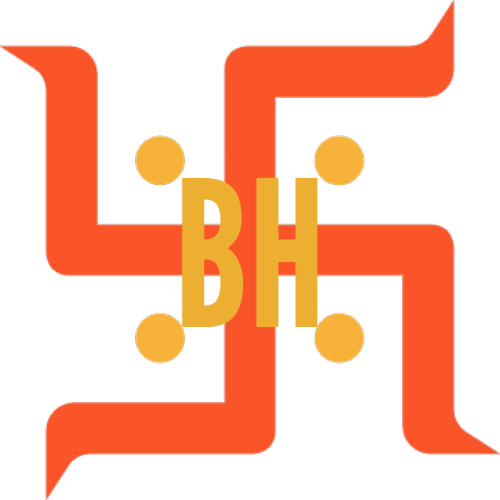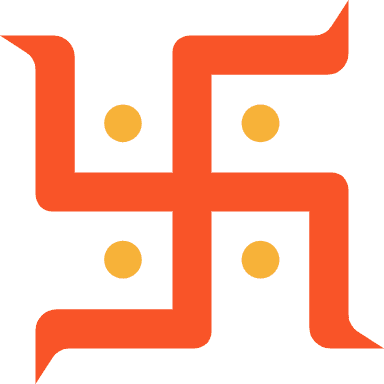
How to do Govardhan puja, Govardhan puja vidhi - Govardhan Puja, also known as Annakut Puja, is a Hindu festival celebrated primarily by worshipping Lord Krishna and the Govardhan Hill, marking the occasion when Lord Krishna lifted the Govardhan Hill to protect the people of Vrindavan from the wrath of Indra, the rain God.
How to do Govardhan puja | Govardhan puja vidhi
This festival is observed a day after Diwali in most parts of India, particularly by devotees of Lord Krishna and followers of the Vaishnava tradition. Below is a complete guide with the significance, rituals, puja samagri, steps to perform the puja, and dos and don’ts for Govardhan Puja.
Significance of Govardhan Puja
Govardhan Puja commemorates the story from the Srimad Bhagavatam, where Lord Krishna lifted the Govardhan Hill to shield the people of Gokul from devastating rains sent by Lord Indra, symbolizing Krishna's teachings to worship nature and perform duty (dharma) with humility. By observing this day, devotees seek Krishna's blessings for protection, prosperity, and well-being.
The festival of Govardhan is celebrated on the second day of Diwali. Annakoot and Govardhan are worshipped on this festival which falls on Kartik Shukla Pratipada Tithi. Basically, this is the worship of nature which was started by Lord Krishna.
On this day, Govardhan mountain is worshipped as the basis of nature and cow is worshipped as the basis of society. This worship started from Braj and gradually became popular in India.
To read in Hindi check गोवर्धन पूजा विधि | Govardhan puja vidhi in Hindi
Govardhan Puja Samagri (Required Items)
The items required for performing Govardhan Puja are:
- Govardhan Hill (symbolic representation made from cow dung or clay)
- Images of Lord Krishna and Govardhan Hill
- Cow dung (for creating the hill and decorating the puja area)
- Diya (oil lamps), ghee, wicks, and matchstick
- Flowers and Tulsi leaves
- Incense sticks and dhoop
- Kumkum, turmeric, sandalwood paste, and gulal
- Grains like rice, wheat, and akshata (unbroken rice)
- Panchamrit (a mix of milk, yogurt, ghee, honey, and sugar)
- Prasad or sweets (such as laddu, halwa, kheer, and fruits)
- Bhog items like vegetables, cereals, and grains
- Offerings like milk, butter, and yogurt
Step-by-Step Guide to Perform Govardhan Puja
1. Preparation: Setting up the Puja Area
- Clean the Puja Area: Begin by thoroughly cleaning the puja space and decorating it with rangoli.
- Create Govardhan Hill Representation: Using cow dung, form a small hill-like structure that symbolizes the Govardhan Hill. You may add figurines of Lord Krishna, cows, and people of Gokul around it.
- Light the Diyas: Place oil lamps around the puja area to create a sacred and auspicious atmosphere.
2. Start the Puja
- Pranayam and Sankalp: Start by meditating on Lord Krishna and taking a sankalp (vow) to perform the puja with dedication.
- Invoke Lord Krishna and Govardhan Hill: Offer your prayers to Lord Krishna and Govardhan Hill by chanting specific mantras or reciting the Krishna Stotra.
3. Offering Prayers and Samagri
- Abhishek (Holy Bath): Perform abhishek for Lord Krishna with Panchamrit, then water, while chanting mantras.
- Decorate with Sandalwood, Kumkum, and Flowers: Apply kumkum, turmeric, and sandalwood paste on the Govardhan representation and Krishna's idol or image. Decorate with flowers and Tulsi leaves.
4. Perform Aarti
- Light Incense and Dhoop: Offer incense and dhoop to Lord Krishna and Govardhan Hill.
- Wave the Diyas: Perform the Govardhan Aarti with a lighted diya. Sing or play the Aarti dedicated to Govardhan Puja or to Lord Krishna.
5. Offer Bhog
- Annakut Bhog (Mountain of Food): Place a variety of food items like sweets, fruits, and cereals in front of the hill representation. The Annakut symbolizes gratitude for nature’s abundance.
- Offer these things to Lord Govardhan - Govardhan Puja is also called Annakoot. On this day, a mountain is made from food items and offered to Lord Krishna. It is also called the mountain of food. During Govardhan Puja, you can offer rice, kheer, puri, vegetables, curry to Lord Govardhan.
- Recite Govardhan Puja Mantras: Recite mantras like "Om Govardhanay Namah" or "Sri Krishna Sharanam Mama" for the blessings of Lord Krishna.
6. Concluding Govardhan Puja Rituals
- Circumambulate the Hill: Walk around the Govardhan Hill representation in a clockwise direction to symbolize reverence.
- Offer Prasad: Distribute the bhog and prasad among family members and other devotees.
- Pray for Protection: Conclude the puja by praying for Krishna’s protection and guidance, acknowledging his act of sheltering devotees during difficult times.
Do’s and Don’ts of Govardhan Puja
Govardhan Puja Do’s
- Respect Nature: Like Krishna advocated, take care of nature and animals, especially cows.
- Follow Cleanliness: Ensure the puja area and surroundings are clean, as it invites purity into the ritual.
- Observe Fasting or Light Diet: Many devotees observe a light fast or vegetarian diet on this day.
- Involve Family Members: Performing the puja together strengthens family bonds and collective devotion.
Govardhan Puja Don’ts
- Avoid Non-Vegetarian Food: Do not consume non-vegetarian food or alcohol on this day.
- Refrain from Negative Thoughts: Keep a positive mindset to maintain the sanctity of the puja.
- Don’t Wear Unclean Clothes: Clean and fresh attire is considered respectful in puja rituals.
- Do Not Use Garlic or Onions: Traditional Govardhan Puja Bhog excludes garlic and onions.
Mantras for Govardhan Puja | Govardhan puja mantra
Some mantras you can chant during the puja:
Govardhan Mantra
Om Govardhanaya Vidmahe Vishnu Priyaya
Dhimahi Tanno Govardhan Prachodayat
ॐ गोवर्धनाय विद्महे विष्णु प्रियाय
धीमहि तन्नो गोवर्धन प्रचोदयात्
Krishna Mantra
Om Kleem Krishnaya Govindaya Gopijana Vallabhaya Swaha
ॐ क्लीं कृष्णाय गोविंदाय गोपीजन वल्लभाय स्वाहा
Performing Govardhan Puja with devotion is believed to bring blessings, protection, and prosperity while reinforcing one’s connection with nature, gratitude, and the teachings of Lord Krishna.
Govardhan Puja Katha
The religious belief behind worshipping Govardhan is that Lord Krishna wanted to shatter the pride of Indra. For this, he protected the people of Gokul from Indra by lifting Govardhan mountain on his little finger.
It is believed that after this, Lord Krishna himself ordered to worship Govardhan mountain by making 56 bhogs on the day of Kartik Shukla Pratipada. Since then, the practice of Govardhan Puja continues even today and the festival of Govardhan Puja and Annakoot is celebrated every year.
Govardhan Puja Katha | Story
According to mythology, Lord Krishna protected the people of Braj from the wrath of Indra Dev in Dwapar Yuga. According to the story, Indra had the arrogance that he was Devraj, so Lord Krishna stopped the worship of Indra and got the Govardhan mountain worshipped.
When Indra Dev saw that the people of Braj had stopped worshipping Indra and started worshipping Govardhan mountain, he got angry. Indra started heavy rain in the Braj area to take revenge.
The rain was so heavy that the people of the village and their houses and fields started drowning in the water. Then to protect the people of Braj, Lord Krishna lifted the Govardhan mountain on his little finger.
For seven days, the Lord lifted the Govardhan mountain and kept all the people of Braj safe. When Devraj Indra realized his mistake, he apologized to Krishna. Since then, the festival of Govardhan Puja is celebrated every year on the Pratipada of Kartik month. Let us tell you that even today people come to worship and circumambulate the Govardhan mountain.
Importance of Annakoot
Annakoot means 'mountain of food'. During Govardhan Puja, a mountain-like shape of various food items is made and it is offered to God. This is called Annakoot.
This bhog includes kadhi, rice, kheer, puri, vegetables and many other dishes.
After offering it to God, it is distributed among all the devotees in the form of prasad.
Govardhan aarti | Govardhan ji ki aarti
॥ Aarti Shri Govardhan Maharaj Ki ॥
Shri Govardhan Maharaj, O Maharaj,
Tere Mathe Mukuta Viraja Raheyo।
Tope Paan Chadhe Tope Fool Chadhe,
Tope Chadhe Dudha Ki Dhara।
Tere Mathe Mukuta Viraja Raheyo।
Teri Saat Kosa Ki Parikamma,
Chakaleshwara Hai Vishrama।
Tere Mathe Mukuta Viraja Raheyo।
Tere Gale Me Kantha Saja Raheo,
Thodi Pe Heera Laal।
Tere Mathe Mukuta Viraja Raheyo।
Tere Kanana Kundala Chamaka Raheo,
Teri Jhanki Bani Vishala।
Tere Mathe Mukuta Viraja Raheyo ।
Giriraj Dharana Prabhu Teri Sharana,
Karo Bhakt Ka Beda Paar।
Tere Mathe Mukuta Viraja Raheyo।

